Alcester, Warwickshire
Up to 1834
In 1787, the parish of Inkberrow took the manor house at Lower Edgiock for use as a workhouse. Parts of the half-timbered building survived until about 1890.
Eden, in his 1797 survey of the poor in England, reported of Alcester that:
After 1834
Alcester Poor Law Union was formed on 31st May 1836. Its operation was overseen by an elected Board of Guardians, 29 in number, representing its 22 constituent parishes as listed below (figures in brackets indicate numbers of Guardians if more than one):
Warwickshire:
Alcester (4), Arrow, Aston Cantlow, Bidford, Coughton, Exhall, Great Alne, Haselor, Ipsley, Kinwarton, Moreton Baggott, Oversley, Salford, Sambourn, Spernhall, Studley (2), Weithley (Weethley), Wixford.
Worcestershire: Abbots Moreton, Feckenham, Inkberrow or Inkborough, Oldberrow.
The population falling within the union at the 1831 census had been 15,923 with parishes ranging in size from Weithley (population 34) to Feckenham (2,762) with Alcester itself having a population of 2,405. The average annual poor-rate expenditure for the period 1834-36 had been £6,593.
The Alcester Union workhouse was built in 1837 at site to the east of Alcester on the south side of Kinwarton Road. It followed the popular cruciform or "square" layout with an entrance block at the front, behind which lay the four accommodation wings radiating from a central hub, creating four yards for the different classes of pauper (male/female, old/young). The location and layout of the site is shown on the 1904 map below.
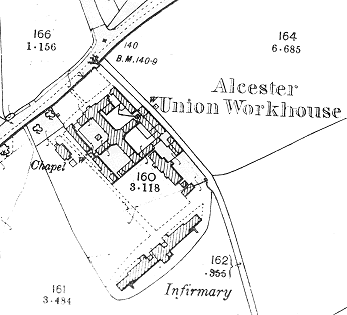
Alcester site, 1904.
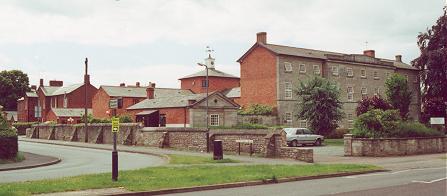
Alcester general view from north, 2000.
© Peter Higginbotham.
The entrance block, which housed the Guardians' board-room, clerk's office, etc., was ashlar-faced, the stone having — as the prominent inscription proclaims — been given by Sir Charles Throckmorton Bart.
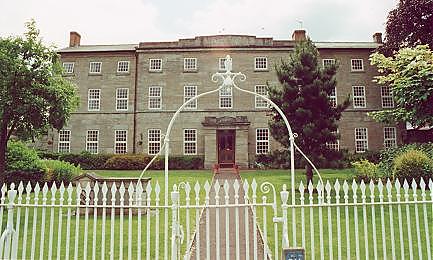
Alcester entrance block from north-west, 2000.
© Peter Higginbotham.
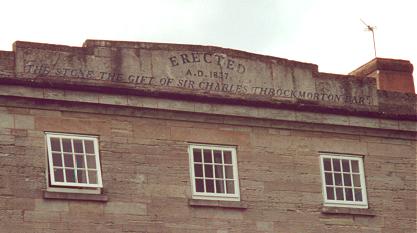
Alcester front inscription, 2000.
© Peter Higginbotham.

Alcester view from east, 2000.
© Peter Higginbotham.
A small infirmary block was added at the east of the site, and was extended southwards in 1879.
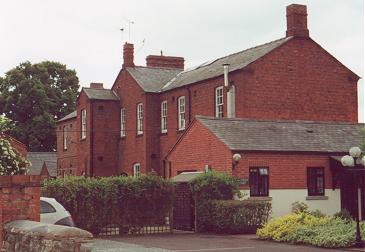
Alcester infirmary block from the north, 2000.
© Peter Higginbotham.
A much larger infirmary was erected at the south of the site in 1899-1900.

Alcester new infirmary, 2000.
© Peter Higginbotham.
A chapel was erected to the west of the workhouse.
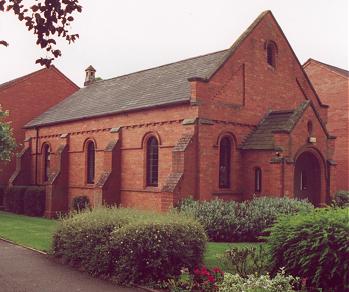
Alcester chapel, 2000.
© Peter Higginbotham.
The former workhouse, later became Alcester Hospital, and the later infirmary block is still in use. The main buildings, now known as Oversley House, were converted to residential use in 1984.
Staff
Inmates
Records
Note: many repositories impose a closure period of up to 100 years for records identifying individuals. Before travelling a long distance, always check that the records you want to consult will be available.
- Warwickshire County Record Office, Priory Park, Cape Road, Warwick CV34 4JS. Holdings include: Guardians' minute books (1859-1930); Admissions and discharges (1902-32); Births (1836-68); etc.
Bibliography
- Higginbotham, Peter The Workhouse Encyclopedia (2014, The History Press)
Links
- None.
Unless otherwise indicated, this page () is copyright Peter Higginbotham. Contents may not be reproduced without permission.


